Choosing the right dog Food for your beloved pet dog is essential because every dog has different nutritional needs. The pet food must be balanced, containing vitamins, minerals, amino acids, fatty acids, and other vital nutrients aiding in your pets’ proper growth and development.
To derive such nutrition, your pet dog must tolerate that particular kind or brand of Food. You can learn about that by examining your puppy’s stool, coat, and weight closely. The objective is to achieve proper body weight without extra fat, shiny coat, and well-formed stools.
This article will provide a complete checklist to help pet owners make an informed decision.
Understand Your Dog’s Unique Nutritional Requirements
The different dog authorities all over the world divide pet dogs into 7 different categories, which are inclusive of all dog breeds. These categories are:
- Sporting- This category has been bred to aid humans in hunting, outdoor activities, walking, and playing. They require premium dry diets, well-rounded raw diets, and wholesome fresh diets.
- Non-Sporting- As the name suggests, the non-sporting is the opposite of the sporting breeds. 18-22% of protein in whole grains is enough for them.
- Working- These are almost professional dogs doing strenuous activities like pulling sleds and participating in rescue operations. They need a lot of strength; thus, Breed and Giant Breed formulae should be fed to them.
- Hounds- They are trained to smell bombs, drugs, and even blood sugar levels, sometimes due to their extraordinary olfactory senses. Their nutritional needs are average due to moderate energy levels. Any adult formulae can work for them.
- Herding- Herding, as the name suggests, was a breed of dogs trained to manage livestock, thus requiring lots of energy. Unique formulae for active or working dogs are best for them.
- Terrier- Energetic and enthusiastic puppies they make excellent watchdogs. They can also be a part of the pest and rodent control squad. Usually, medium to small standard adult diet formulae are enough for these dogs.
- Toy- This category comprises cute and cuddly lap dogs. Small-breed adult nutrition formulae are enough for them as they do not have much activity.
The energy needs of small pups, older dogs, and even lactating dogs are different. The growing pups need the most energy among the group and thus more calories. With age, dogs tend to become overweight, reducing calorie needs.
Calorie consumption must coincide with metabolic speed. Lactating dogs need to consume more calories to suckle young babies.
Proper nutrition is vital to a dog’s adequate growth throughout its lifespan. Poor metabolism rate and obesity might lead to cancer, heart and respiratory diseases, cranial cruciate ligament injury, kidney problems, high blood pressure, diabetes, and osteoarthritis. Thus, calorie intake must be determined carefully.
Essential Nutrients in a Balanced Dog Food Diet
Proteins, amino acids, carbohydrates, vitamins, minerals, and water are the vital nutrients to maintain healthy dogs. A high protein of 10 amino acids is essential for building muscle and donating carbon chains required to make glucose to provide ample energy.
Fats can be derived from animal fats and seed oils in the most concentrated form of energy. Include these in the diet so that the supply of essential fatty acids is not interrupted because these act as carriers of fat-soluble vitamins. Cell structure is impossible without fatty acids.
Fat adds taste to the Food and takes care of the skin and coating of your pet pooch. A deficiency of omega-3 fatty acids might result in vision problems. For an active adult, around 25g of crude protein and 14g of fat is required, whereas in pups, it is 56g of proteins and 21g of fat.
Energy in dogs is derived from proteins, fats, and carbohydrates. Cereals and legumes in dog food provide a significant chunk of carbohydrates. Dietary fiber is also required in its diet for energy and proper bowel movements. Along with these, dogs require vitamins and minerals, too.
Dogs need Vitamin A, B, D, E, K, B12, Niacin, Folic Acid and Choline. Deficiencies in any of these can cause visual impairment, anorexia, cricket, reproductive failure, neurological problems, respiratory problems, a decline in hemoglobin concentration, and also inflammation. The daily need for vitamin intake varies from 425 units to 0.4g depending on size, age, and activity.
There are 12 essential minerals required for dogs. Calcium, phosphorus, magnesium, potassium, sodium, copper, molybdenum, and selenium are critical for the dog’s body to function correctly and develop.
From the development of strong bones and teeth to nerve impulse transmission, the 12 vital minerals have a significant role. The requirement varies from 1g-300mg.
Pet Food Choices
Pet food choices come in a large variety and different forms like canned, semi-moist and dry. The canned foods possess more fat and animal derivatives than the other two varieties.
Some harmful additives and fillers in pet food need to be avoided at any cost. They are Nitrates, MSG, BHA and BHT, Ethoxyquin, and Propyl Gallate. Dogs may get skin issues, depression, irritable bowel movements, and many more such health problems from these additives.
There is also a problem with by-products in dog food. In general, chicken by-products are safe for dogs and are a good source of proteins, fats, and nutrients, but some dogs cannot digest them; it causes allergies.
Reading dog food labels differs from reading regular labels on health drink bottles. Here are some tips to follow:
- The Summary- The front side of the label will glance at the crude protein source for which the food is made and the dog’s life stage, along with additional information like hypoallergenic food for sensitive pets.
- List of Ingredients- The back will mention the quantities of the ingredients. If you choose a meat meal or bone meal, you have to know that the meal will consist of 75% water.
- By-Product Information- Dog foods usually contain by-products that cannot be avoided during manufacturing. Bones, stomach, cleaned intestines, and brain might be the meat by-products included in dog food. So, you must read about the individual ingredients to know about their nutritional value.
- Preservatives and Fillers- Names like BHT and BHA are harmful to your pet and thus should alarm you. Do not buy such products; these are used to enhance the shelf life of the product and not your pet’s.
- Nutritional Value- This section displays the AAFCO food labeling guide, offering information on your pet’s dietary requirements. If the Food meets AAFCO requirements, then that means the Food has been tested in feeding trials and found to provide balanced nutrition. The life stage will also be mentioned on the labels.
- Nutritional Analysis Section- The maximum and minimum amount of nutrients are found in this section. A healthy dog formula should consist of 7% crude protein. Labels must state the minimum percentage of crude protein and fat and the maximum percentage of natural fiber and water.
It would help if you looked for certificates validating those claims by mentioning terms like holistic, organic, and natural.
Pet Food Safety Measures and Quality Assurance
Association of American Feed Control Officials or AAFCO is the organization regulating pet food quality all over the world. The pet food industry applies different unit operations to reduce and prevent the presence of chemical, biological, and physical components causing hazards to the pet’s health.
Pet food is analyzed for fatty acids, protein, amino acids, calcium, phosphorus, and heavy metals. Different types of sample analysis are done to find the other nutrients.
Those analyses are:
- Microbiological Analysis is done for food safety
- Heavy Metals Analysis is also done for food safety
- Proximate Analysis for Nutritional Quality
- Fatty Acid Profiling for nutritional quality
- Amino Acid Profiling and Furosine Analysis for nutritional quality
- Statistical Analysis
Good manufacturing practices, or GMP, are the foundation of pet food safety analysis. The dog food is subjected to a thermal process that eliminates pathogens. The presence of pathogens will contaminate the food and thus destroy it. The extrusion process does not impact the digestibility of pet food.
Some essential minerals may only be recovered if it is followed correctly. There is no problem with the heavy metal analysis within the industry. It is vital to keep a tab on industry trends and practices, and that can be achieved by reading articles online on various pet food websites that provide relevant information.
Food Allergies in Dogs
Dogs suffer from food allergies or sensitivities caused by complex carbohydrates or proteins in which the immune system overreacts and produces antibodies to substances that it will otherwise tolerate.
The signs of food allergy in your pet dog will include itchy paws, skin, ears, vomiting, or diarrhea. Other secondary signs could be weight loss, lack of energy, aggression, and hyperactivity.
Dogs’ most typical food allergens are proteins, particularly beef, chicken, eggs, dairy, soy, and wheat gluten. Usually, it is the protein that triggers allergy in dogs, but sometimes, it can also be done by additives. The most effective way to learn about your dog’s allergy is to undergo a trial in which the pet is fed only a hypoallergenic diet for 8-12 weeks.
If the symptoms disappear during this trial, re-introduce the old food items for a week and check if the symptoms still exist. If the symptoms exist, then your dog has a food allergy. Blood tests can also be done to determine dog food allergies, but they could be more effective.
Vets prescribe hypoallergenic diets to treat food allergies in dogs. There are types of hypoallergenic diets. They are:
- Veterinary novel protein diet- This diet does not contain any of the previous food items. Some novel protein diet names include Royal Canin Protein Diet, Rayne Nutrition Kangaroo-MAINT, and Selected Protein RC.
- Home-prepared novel protein diet- This diet consists of food items formulated by a veterinary nutritionist and requires a balancing supplement.
- Veterinary Hydrolyzed Protein- In this diet, the crude protein is broken down into pieces that your dog’s immune system cannot recognize.
Sometimes, dogs can develop other allergies besides the existing ones, so consulting your veterinary doctor is necessary.
The Importance of Choosing Reputable Brands of Pet Food
As discussed above, the reputable brands in the pet food industry follow the GMP or good manufacturing practices through which the dog foods are made safe for consumption. They go through many tests to evaluate the quality of different nutrients. Some of the reputed brands in this industry are Acana, Orijen, Pedigree, Purepet, and Royal Canin.
Picking out the right brand of dog food for your pet can be overwhelming at times. However, the label on the pet food container is the first thing to note. They carry all the information about the Food. You can go for the ones that have higher ratings. Going for large dog food companies is better because you can track their history and customer reviews.
The larger companies employ food scientists, test raw materials, conduct regular safety drills, operate their manufacturing facilities, and maintain in-house labs for testing to verify finished products. You can visit the websites of the larger companies and track their recall history before buying any item.
There, you can also find information on the source of the ingredients. Only purchase products from companies that maintain their own website avoid answering questions regarding their products and do not call back the customer.
The recall history can be the most critical factor in deciding a brand’s trustworthiness. While some companies respond positively to recalls, others work hard to cover their recall history and do not own up to their mistakes.
Some company’s tiny brands conduct silent recalls in which only the distributors are informed and not the potential customers. However, some recalls might be isolated events that do not add to the brand’s reputation. In such a case, you can buy your pet food from this brand.
Pet food industry certification is nonexistent. Therefore, AAFCO or the American Association of Feed Control Officials in the USA approves pet foods following the labeling guidelines for human organic foods.
Consulting Veterinarians
The vets must be consulted occasionally for recommendations regarding your pet. They offer expertise in protecting animal health, are aware of AAFCO standards, and can help you decide to choose a dog food.
Your vet will carefully analyze the situation and health of your pet dog and inform you about the time to switch from puppy food to adult food. If your dog has a medical condition, it becomes imperative to talk to the vet before choosing dog food. Veterinarians often prescribe dog food for particular medical conditions.
Prescription or specialized diets for dogs created by expert vets can benefit their health. These diets help maintain maximum nutrition and limit the risk of developing and aggravating medical conditions.
Conditions like kidney failure, liver dysfunction, weight gain, diabetes, and many other diseases can be restrained through specialized diets. The prescribed dog food is made with nutritional supplements and ingredients in proper proportions for dogs who are suffering from a particular disease.
Consider Your Budget
Budget is one of the primary concerns when buying dog food. If you purchase Food from a large brand, the price could be higher than a smaller one, but the quality needs improvement. So, it is essential to establish a balance between quality and affordability.
Some tips to find the most cost-effective options in terms of dog food are:
- Look for discounts and future sales
- Buy in large quantities
- Compare prices
- Use loyalty programs
- Sign up for auto deliveries
- Make some of the treats
- Subscription programs
Product price comparison can be done through websites and shopping around stores. Nowadays, people also compare store prices against online pricing. Sometimes, online deals are better than in-store pricing, thus making you save money on your purchase. If you are planning long-term, buying in bulk can be helpful in quantity and price.
How to Feed Your Pet Dog Properly?
Feeding your pet dog properly is imperative to maintaining good health. The pet food label displays the ingredients list, feeding instructions, and the guaranteed analysis. Go through all the sections thoroughly, especially the feeding instructions section. In this section, they will mention the amount to be fed to your pet dog.
The basic guideline is provided on the package, but in order to feed your dog the correct amount, you need to take into account its age, activity level, and also any medical health condition.
Feeding your pet dog on time and in measured portions is essential. Without properly measured portions, the pet will put on weight and become lethargic. For puppies aged between 6 and 12 weeks, 4 feedings a day is appropriate. Large breeds can eat dry Food from the 9th week, while the small breeds can eat the same from the 12th week.
This will aid in easy digestion and keep up the pup’s energy levels. You should feed 20g per kg of your puppy’s body weight.
Some dogs are strict carnivores, whereas others are not. A mix of dry and wet Food can also do wonders. Healthy pup treats are also available online and can be given to the pups.
When the puppy reaches 1 year, two more significant meal portions are adequate depending on their weight and species. Pups need 5 meals daily, and adult dogs need 2 meals 12 hours apart. Before switching to adult food, consult with your vet.
Different Types of Dog Food
You can feed your pet dog in the market with different types of pet food. The only goal is to meet their nutritional needs. Remember, you can choose from Kibble, canned, semi-moist, and home-cooked Food. There is also raw food available for them.
The pros and cons of these different types of Food include:
- The Kibble is the most economical, store-worthy, and nutrition-packed Food for starters. It is available in multiple flavors and suits all age types.
- Canned Food is the easiest to find in stores and is a form of wet Food. It is expensive but has a long shelf life. However, canned Food may offer only some nutrients the pet requires.
- Semi-moist Food can be given as a treat sometimes because they are in the form of pork chops, burgers, and other meat products. These contain artificial flavors and may not be healthy due to their high sugar content.
- Home-cooked Food is like cooking Food for humans. They enhance the choices and add more nutrition to the pet food. These are healthiest but can be expensive and time-consuming. Knowing about all the nutrients is also required before preparing Food at home.
- Raw dog food combines raw meat, bone, and organs. Since dogs have strong stomach acids and small intestinal tracts, it is good for them. It is a good source of calcium and phosphorus. Although it is a good choice, it is wise to consult with your veterinarian.
While feeding them on time and giving them a particular type of Food can enhance health, rotating the choices can also be healthy sometimes. Creating a variable diet can help have balanced Food and a vital intestine. Turning can also create excitement among dogs and reduce the chance of food allergy.
It is an excellent way to make your pet consume water. You can rotate the food type or alter between the primary protein sources. Whichever it is, rotating creates a good environment inside and outside the pet’s body and mind.
Diet for Dogs with Specific Health Conditions
With age, your pet dog can start suffering from diseases like diabetes and pancreatitis. Some dogs also develop kidney issues. You cannot continue to follow the same diet for dogs with these diseases as you do with the normal adult ones.
The first and foremost thing to do when you find out about your dog’s illness is to consult a veterinarian. He will tell you about the dietary restrictions you have to follow.
Usually, prescription food is given to the canine if it is inflicted with such diseases. If your dog develops pancreatitis, you must follow Hill’s Prescription Diet or the Royal Canin Gastrointestinal Low Fat Diet. Food with less fat content must be provided for patients with this disease.
For diabetic dogs, the diet should contain a single source of high protein and gluten-free carbohydrates. These can be derived from tapioca, corn, rice, and potato. The presence of around 10% fat and the presence of healthy fatty acids is recommended. The diet should contain about 3-7% fiber in the fermented form, and finally, ensure the addition of prebiotics and probiotics.
Dogs can be diagnosed with kidney disease at any age, and a therapeutic diet containing small amounts of sodium, potassium, protein, and phosphorus is provided, along with increased amounts of omega fatty acids. During this period, your dog must avoid eating bones and red meat with high protein. You can add oily fish, berries, and dark leafy greens to repair the kidneys.
Dogs with liver problems need good proteins like eggs containing choline. Fish like sardines, cod, and salmon also provide good protein. Lean meat of kangaroo, ostrich, and venison can also be included. Irritable Bowel Syndrome is also quite common in dogs, and during the treatment, they can be fed a sweet potato and small fish diet, barley and canine pork diet, or oats and turkey diet.
Prescription and therapeutic diets are specially formulated by veterinarians for dogs suffering from severe illnesses. They are beneficial for providing unique nutritional support to the pets, personalized for them to fight the disease.
Allergies, inflammation, autoimmune issues, and other chronic health issues can be relieved through prescription diets. Pet World, Animal & Pet Care, and The Pet Inn are some stores where you can get specialized dog food for unique demands. Dog foods are available on Amazon as well.
Reading Consumer Reviews and Recommendations
In this day and age of the internet, it is easy to find out about a particular brand of dog food. Various websites showcase reviews, testimonials, and complaints about a dog food brand. It can sometimes be overwhelming but provides insight into the overall brand.
Reading consumer reviews is a good habit, and you will develop an experience with it, which will help you to decide which review is an honest one and which is propaganda. Check the website policy first before you start reading reviews. Do not depend on only one or two reviews to know about the product. Read multiple of them to get an insight.
Finding out about the reviewer’s credentials also goes a long way in understanding the quality of the product. Beware of companies that make tall claims about curing pets suffering from a disease. Certain food brands only come with a veterinarian’s prescription to treat a particular disease.
There are others you can choose to feed your pet, which can help reduce weight without a vet’s prescription if necessary. Make a habit of reading the entire review and also reading between the lines to understand the quality of the reviewer and the review.
There are so many online reviewers that you need clarification regarding where to find unbiased value-based reviews. Some sources will provide authentic and unbiased reviews- Dog Food Advisor, Dog Food Reviews and Ratings, Home-Whole Dog Journal, Dog Health, Care and Training, Independent Dog & Cat Food Reviews-Pet Food Ratings.
Keep Yourself Updated on Pet Food Industry News
Like any other industry, the pet food also has trends and followers. Experts opine that the sector is growing and will have exponential growth in the future. The latest trend in the industry is focusing on specific health benefits of food for pets. Large companies are introducing more GMP to maintain the quality, and many small companies are also playing the field.
People readily accept more and more pets in their homes, thus causing the industry to boom. Luxury, premium, and functional foods are making their way into the mainstream pet food industry as owners are becoming more focused on their pets’ Food.
Various websites like petfoodindustry.com, petfoodprocessing.net, newfoodmagazine, and truthaboutpetfood provide the latest news on the industry. Subscribing to these websites’ newsletters and checking the expert blogs will give you an insight into the industry trends.
Sustainability and Ethical Practise in the Pet Food Industry
Using nutritive elements without creating a burden on food animal production and slaughter, as well as reducing agricultural pressure and environmental toll, is sustainability in the pet food industry. Sustainability also means encouraging homemade Food and leftovers for pet dogs. Sustainability stands on three pillars: social, economic, and environmental.
Sustainable practice in the pet food industry pertains to sourcing raw materials responsibly without hurting the environment, minimizing waste, and decreasing carbon footprint in the process of manufacturing the Food. Sustainability also deals with fair trading practices involving everybody’s welfare.
Different types of dog foods are prepared in other factories, and all of them cause some damage to the environment. Industrial farming, especially livestock for meat-based pet food, adds to water pollution, deforestation, and greenhouse gas emissions. Animal waste often causes additional pollution.
Also, the processing plants producing dog food are energy-intensive, thus contributing to more carbon dioxide emissions. Moreover, the industry depends heavily on the global transportation of various ingredients and the final product. This also means high fuel consumption and more carbon emissions. This results in an increase in overall costs and a decrease in quality.
Sustainable practices have various benefits, like fewer allergens, improved digestion, immunity boost, and high-quality ingredients for dogs. For pet owners, choosing sustainable dog food and actively supporting companies prioritizing sustainable farming practices means economic savings and peace of mind. You will encourage animal welfare and fair labor conditions as well.
There are a couple of environmental benefits, like reduced carbon pawprint, supporting the local economy, promoting biodiversity, and practicing responsible use of resources. FurrMeals, BARF India, Licks, and Crunch are some companies practicing sustainable dog food production.
GFSI, or Global Food Safety Initiative, FSC32, is the certification for pet food safety. The Marine Stewardship Council, or MSC, is the most widely employed resource for sourcing sustainable seafood in the pet food industry.
Transitioning to a New Food
Transition periods are inaccessible, but if you follow the process correctly, it improves with time. Usually, during transition dog’s current Food is mixed with its new Food. Over 7 days, increase the amount of fresh Food and slowly decrease the amount of existing Food to help your pet transition smoothly. Here are some more tips to follow:
- Puppies transition into adulthood at 12 months, and the Food must start changing during that time to adjust to the growing need for nutrients.
- The food transition must also depend on the breed. The small and large breed dog food should be given to them respectively.
- Small or medium-sized dogs that get older should start having adult food by age 7 to receive all the nutrients needed to maintain proper health.
- For large breed dogs, the food transition should happen around five years of age; otherwise, they cannot derive the required nutrients.
- Pregnant or lactating dogs need energy-rich foods with high calcium levels, so make the transition accordingly.
- Discuss food transition with your vet in case the vet has provided a prescription or therapeutic diet for your dog.
During this transition process, dogs might suffer from diarrhea, vomiting, diminished appetite, and upset stomachs. However, following the gradual process mentioned above will make it accessible to both the dogs and the pet owners.
You will know that your dog likes its Food when:
- It is eagerly waiting to eat
- Wagging its tail during mealtime
- The overall health is improving, and energy level has increased
Keep monitoring, and if you find signs of concern, then take it to your vegetarian.
Evaluating and Adjusting Frequently
After your pet dog has transitioned into eating new Food, you must reevaluate its nutritional needs. The dietary needs differ depending on size, age, breed, and activity. Here are some signs to indicate that your dog needs dietary change:
- Putting on Weight- If you find your furry friend is becoming lethargic and putting on weight, you must also check its diet and physical activity. Either control the portions or change your diet.
- Lost Weight- If your puppy has lost weight, even then, it is time to check its dietary practices. Talk to your vet and adjust accordingly.
- Dry and Itchy Skin- Dry and itchy skin is an allergy symptom. It could be a food allergy requiring treatment to remove allergens. Give your dog a hypoallergenic diet and change the current one.
- Simple Signs- Look for signs like flatulence, smelly stools, and dull coats without shine. These are signs to change the Food due to its incompatibility.
- Transition- The metabolism process slows down according to the age of dogs, and their nutritional needs diminish. Some companies design dog foods for senior dogs so that you can buy these, or you can adjust the Food and supplement yourself and introduce fish oil, fresh fruits and vegetables, and salmon into the diet.
- Variety is the Spice- variety in your dog’s Food will make it happy. Eating the same Food for days and months may cause depression, and changing them once in a while will also introduce new macronutrients and proteins, making them happy.
Apart from all these, it would help if you visited your vet occasionally to discuss your pet’s mental and physical health.
The Final Word
Selecting Food for your pet dog is a process if you wish to have a healthy pet. Understanding your dog’s nutritional needs and evaluating the key ingredients depending on the need is extremely important.
Researching brands, keeping in mind food safety, and considering allergens and harmful additives must be done before choosing the brand.
Always discuss with your veterinarian regarding a specialized diet in case of illness and before Food transition. Portion control is vital when you are the owner of a growing pup. You should buy food items from a company that practices sustainable food production.
If you keep yourself updated regarding industry practice, you can buy the perfect food product for your dog. This checklist will provide a reference point for purchasing the appropriate Food for your pet dog.
 DogExpress
DogExpress

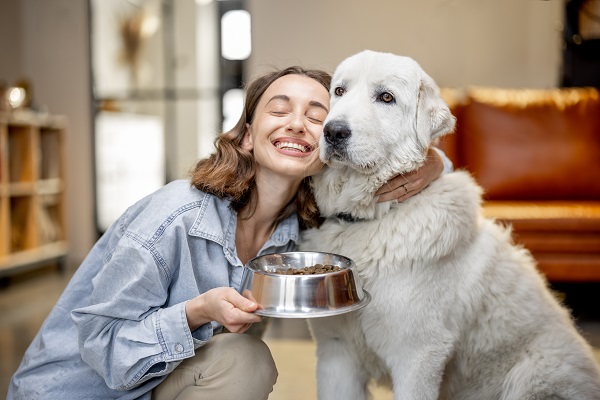

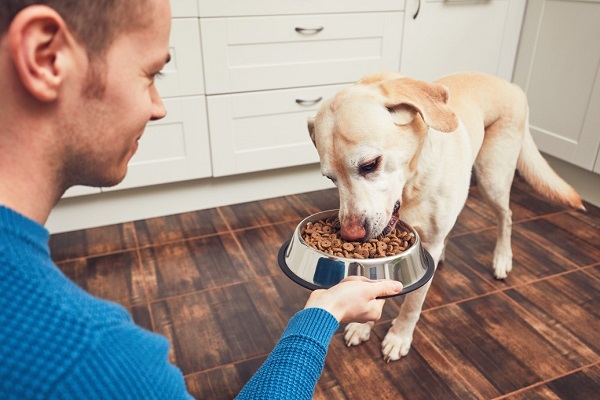
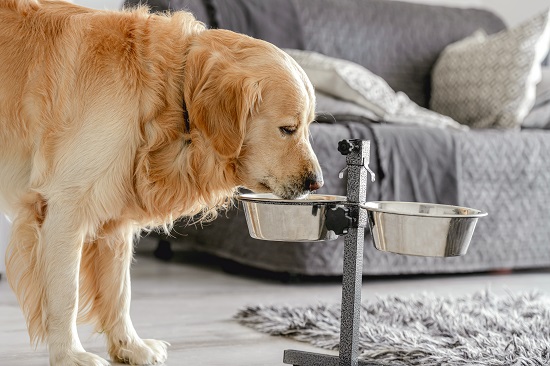
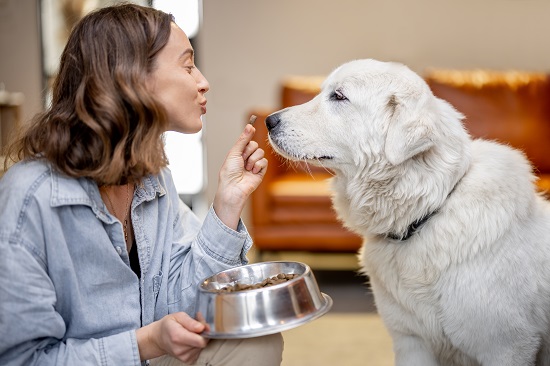





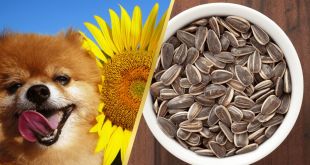














 in Chandigarh, India.
in Chandigarh, India. 

